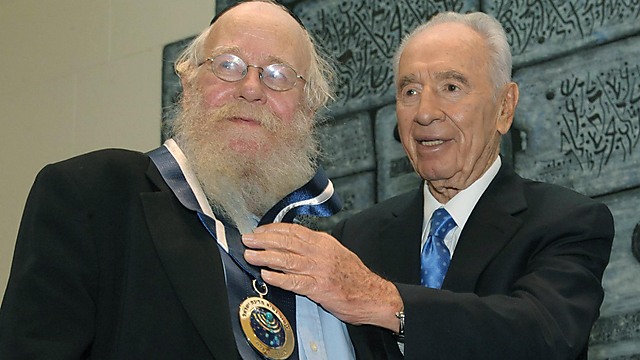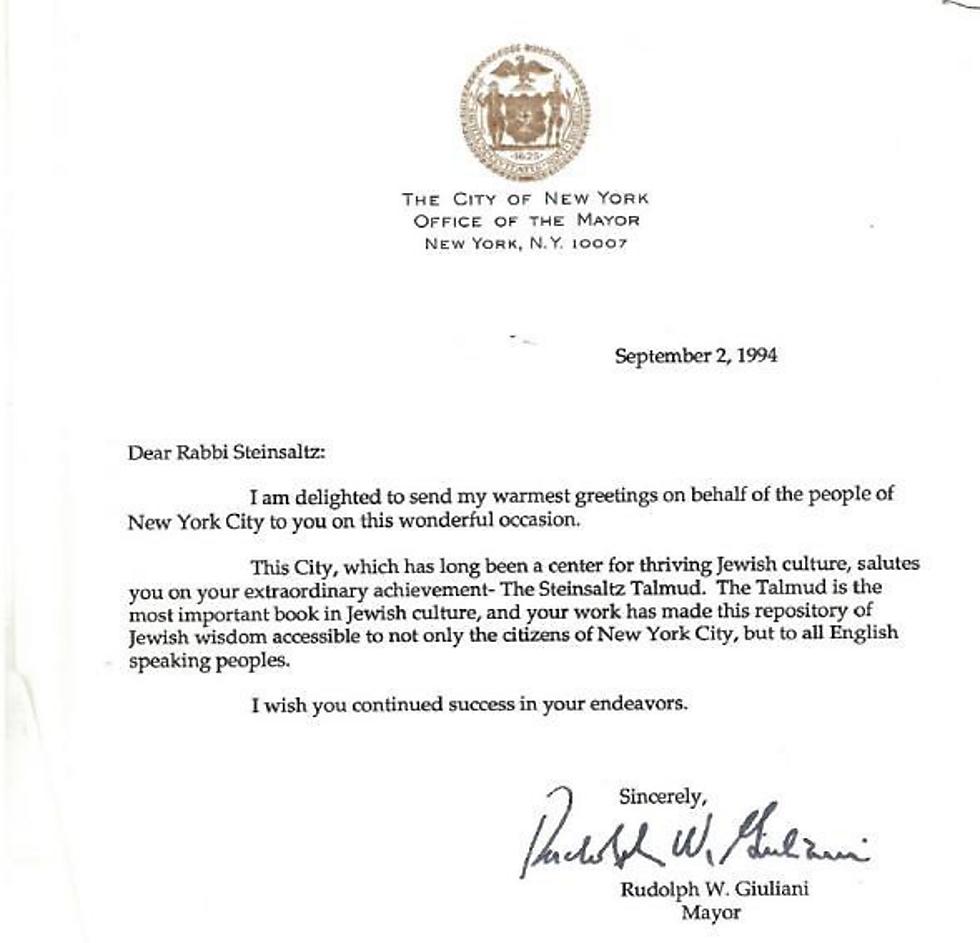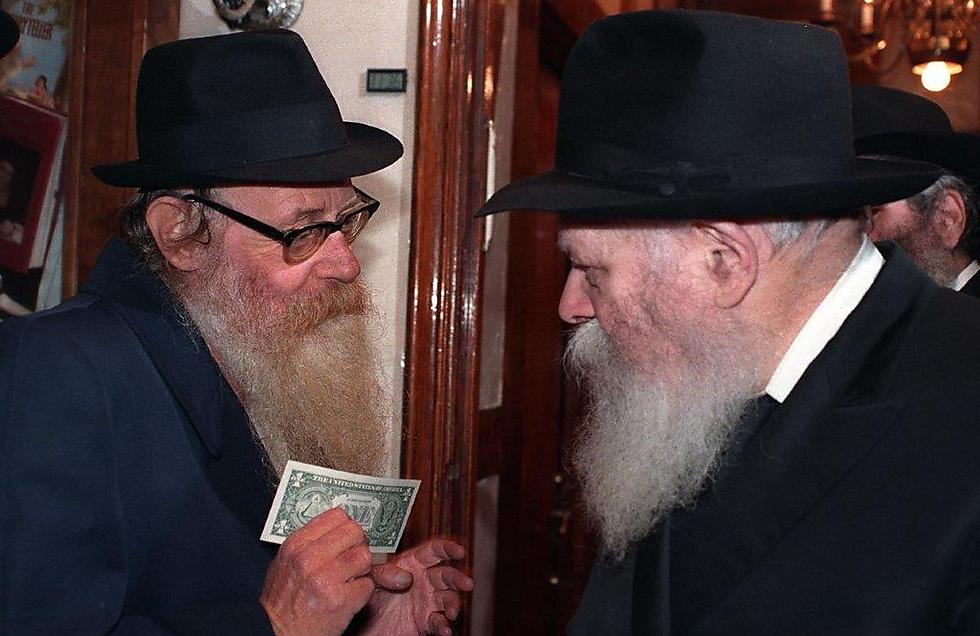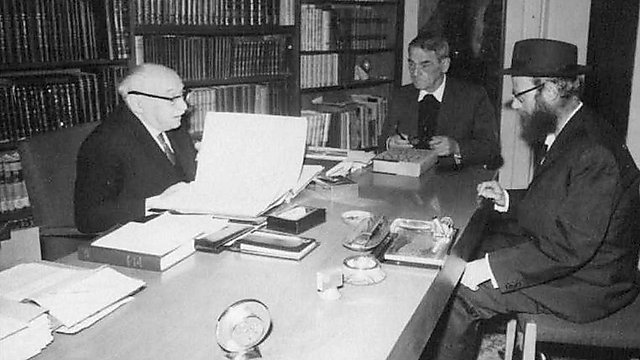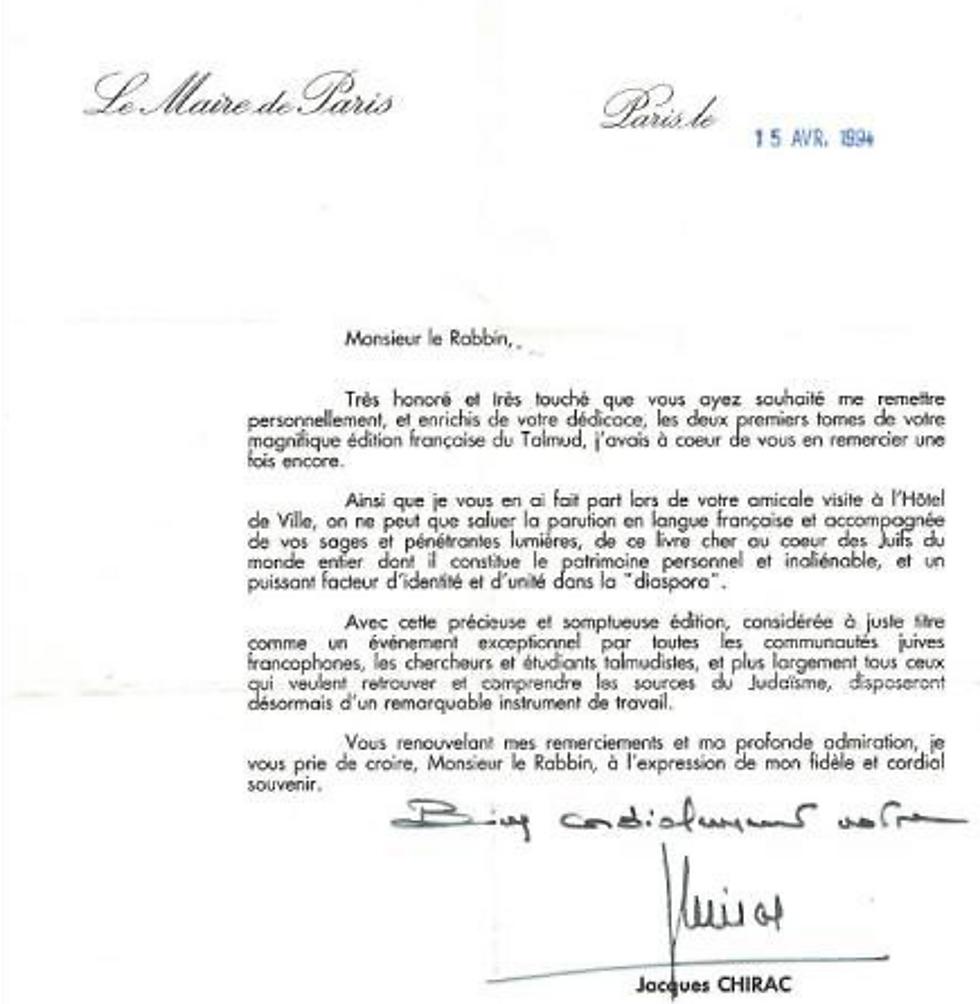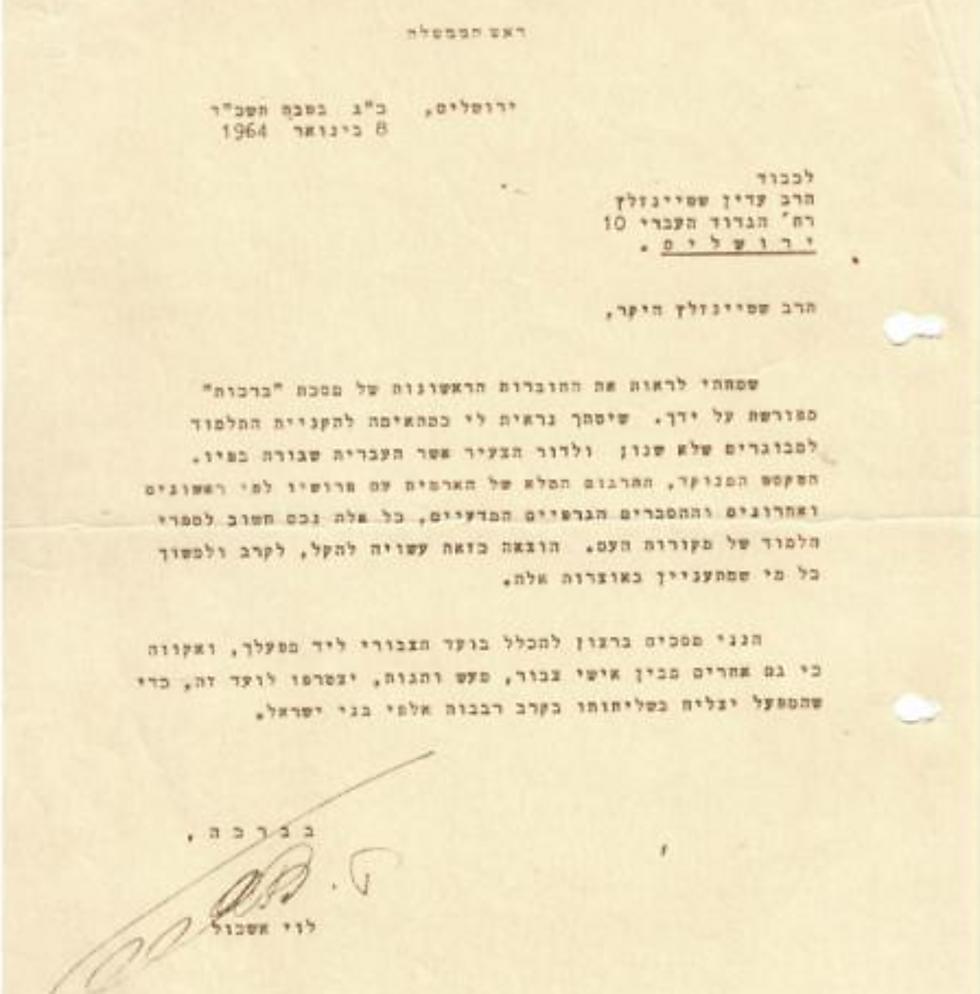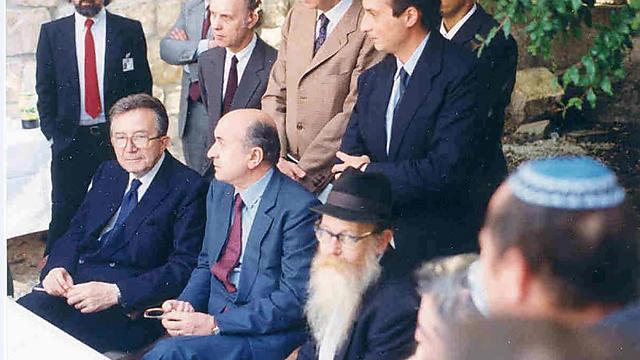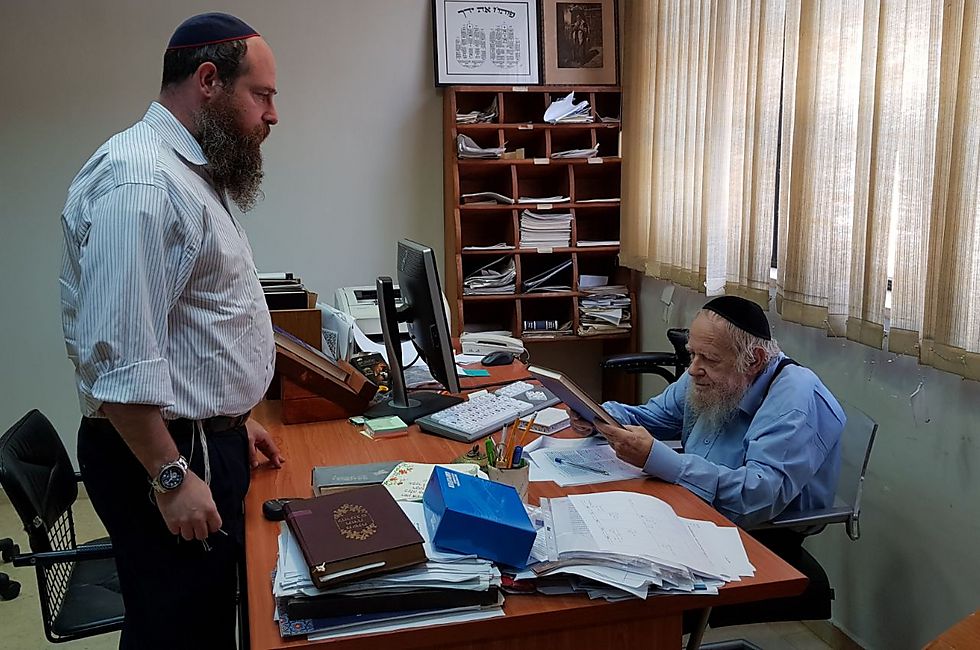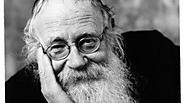
Living history: Rabbi Steinsaltz’s archive comes to light
In honor of the 80th birthday of one of the most important rabbinic figures of our time, who made the Talmud accessible to everyone, the institute he founded in 1965 is opening up its archives to reveal his extensive correspondence with Israeli leaders, scholars and statesmen from around the world.
About a year after being rushed to hospital in serious condition following a stroke, Rabbi Adin Even-Israel Steinsaltz—considered one of the greatest minds of our generation in Israel and worldwide—is still recovering.
In honor of his 80th birthday, the Israel Institute for Talmudic Publications, which he founded in 1965, is opening up its archives and bringing to light his extensive correspondence with top Israeli leaders throughout the generations, as well as scholars and statesmen from around the world, revealing a little of Israeli history.
Organized in chronological order, the letters uncover the rabbi’s comprehensive relationship with different people who supported his life’s work—the Talmud’s translation into Hebrew, which received the name “The Steinsaltz Talmud," the Lubavitcher Rebbe, prime ministers (from David Ben-Gurion to Benjamin Netanyahu), international figures (like former French President Jacques Chirac) and intellectuals and religious figures (like Nobel Prize Laureate Shmuel Agnon, Shas spiritual leader Rabbi Ovadia Yosef and others).
In fact, the impressive gallery of names includes almost every significant Israeli public figure (as well as international figures). The correspondences point to different leaders’ deep appreciation of the 80-year-old rabbi’s work over the years.
Ben-Gurion on the spirit of Judaism
Rabbi Adin Even Israel Steinsaltz was born to a secular family in Jerusalem in 1937. As a teenager, he decided to become religious and joined the Chabad movement. After studying chemistry and physics at the Hebrew University, he worked as a school principal. He holds a degree in mathematics too.
Later on, the rabbi decided to focus on writing many diverse books on Judaism. The highlight was “The Steinsaltz Edition,” a Hebrew translation and commentaries on the 2,711 pages of the Babylonian Talmud. His comprehensive work won him the Israel Prize for Jewish studies in 1988, as well as the President’s Prize in 2012.
He gained international recognition too. Time Magazine referred to him as “A once-in-a-millennium scholar,” and he was considered to have a particularly close relationship with the Lubavitcher Rebbe, who was the subject of his book “My Rebbe." A moment before completing his monumental commentary of the Bible, which will be published soon by Koren Publishers, he suffered a stroke, which he is still recovering from.

At the Israel Institute for Talmudic Publications, which is now headed by his son, Rabbi Menachem Even-Israel, I received a plastic folder which encompasses a glorious history. It starts with a simple notebook page on which David Ben-Gurion, Israel’s first prime minister, wrote his opinion on contemporary Israeli Judaism in 1962: “We must foster more mutual tolerance among our people, and accept the fact (which isn’t new, but has existed in my opinion since our very first day) that there are different opinions on spiritual matters, and bestow upon the entire young generation the recognition of the history of our people and its creation in all stages of its development.”
As for the division between “religious” and “secular,” he added that “this distinction between Jews is not, as far as I know, part of the spirit of Judaism.”
‘Parroting back information’
The collection includes documents pointing to tight relationships on both sides of the Israeli political spectrum, with letters from late Prime Ministers Yitzhak Rabin and Menachem Begin lying side by side.
In his letter, Rabin wrote: “The ‘interpreted Talmud’ opens the gates of Talmud to anyone wishing to study.” He expressed his hope that “this work will expand and deepen the unity among the Jewish people in Israel and in the Diaspora.”
President Shimon Peres wrote, “I would like to congratulate you for the publication of the 25th volume of the Babylonian Talmud. You belong to a handful of people who, through their actions, place a stamp of quality on the Jewish people’s way of life.”
In the minutes from his institute’s foundation in 1965, Rabbi Steinsaltz presented his doctrine to the advisory committee members, explaining that the goal of the project was not just to translate and understand the Talmud, but also to impart the Talmudic “ways of thinking.”
As he put it, “The problem of studying the Talmud is not in parroting back information studied by others. The essence of the matter is that a person enters what is called ‘the sea of Talmud’ and learns how to swim in it. In other words, the Talmud requires a familiar type of identification with the course of events, with the lines in it, with its ways of thinking, of taking the road of negotiations.”
Late Prime Minister Levi Eshkol, who headed the institute during his time in office, even asked other “public figures, activists and intellectuals” to join. In his letter, he stated that “the punctuated text with the full translation from Aramaic, with his commentaries and scientific explanations, are all an important asset for the textbooks of the Jewish people’s writings. Such a publication can facilitate in bringing people closer and attracting anyone interested in these treasures.”
‘A valuable asset and a treasure trove’
While the initiative was highly appreciated by the religious and secular public, the ultra-Orthodox sector reacted with a public boycott and even slurs. One of the main opponents was Rabbi Elazar Menachem Man Shach, the unshakable leader of the Lithuanian-Haredi community.
Eventually, however, the Haredim gave in and began creating their own versions of the Talmud with translations and interpretations. In fact, they introduced as many as 16 different imitation versions making the Talmudic text more accessible to those who are unfamiliar with it, but the boycott on the rabbi and his work remained unchanged.
Below the surface, however, the exchange of letters indicates he had close friendships with people in the Haredi public as well, like Rabbi Ovadia Yosef and other prominent rabbis, whose letters offer a different narrative. Rabbi Mordechai Eliyahu, for example, referred to the translation volumes as “a valuable asset and a treasure trove.”
Israel’s former Chief Rabbi Yisrael Meir Lau had a lot of appreciation for the rabbi too, as did Rabbi Mordechai Yehudah Leib Sachs, who rushed to issue a letter of support in response to the resistance in the Lithuanian circles. Rabbi Moshe Feinstein, who was considered the greatest “posek” (a legal scholar who decides the Halacha) in the United States, expressed his public support for the translation project in several letters.
‘It’s better to be agnostic than ignorant’
"The general motto of Father’s entire life’s work was very clear,” says Rabbi Menachem Even-Israel. “It’s more important for people to know what they’re doing than how they do it. The goal is knowledge.
“Today people talk about religionization and all that. An organization like ours should have taken the lead on that issue. The goal wasn’t to make people become religious, but to make the Jewish world of knowledge more accessible. Father took a book like the Talmud and made it accessible.
“I would like to quote my grandfather, who said it was better to be agnostic than ignorant. This is a state with a Jewish character, let’s say even pluralistic, but what does that actually mean? What is the meaning of this identity? They will tell you to your face: I don’t know.”
Rabbi Even-Israel advises all those who are against instilling Jewish knowledge to “simply learn, without being afraid that the child will become religious tomorrow morning. The Jewish folklore, the Sacrifice of Isaac story, is not a religious story. At least get to know your culture.
“I was in Rome a couple of weeks ago, and everyone knows where the Colosseum or the Vatican are. Ask an Israeli for the Western Wall’s location, and he’ll tell you it’s in Jerusalem. But have you been there? And where is the Valley of Megiddo, do you know? It’s an amazing place, filled with important events. Knowledge is an important thing, and in the new generation of Israelis it’s super important, because the question being asked is ‘why am I here?’ And many people simply don’t have an answer. Why, actually?”










